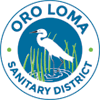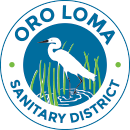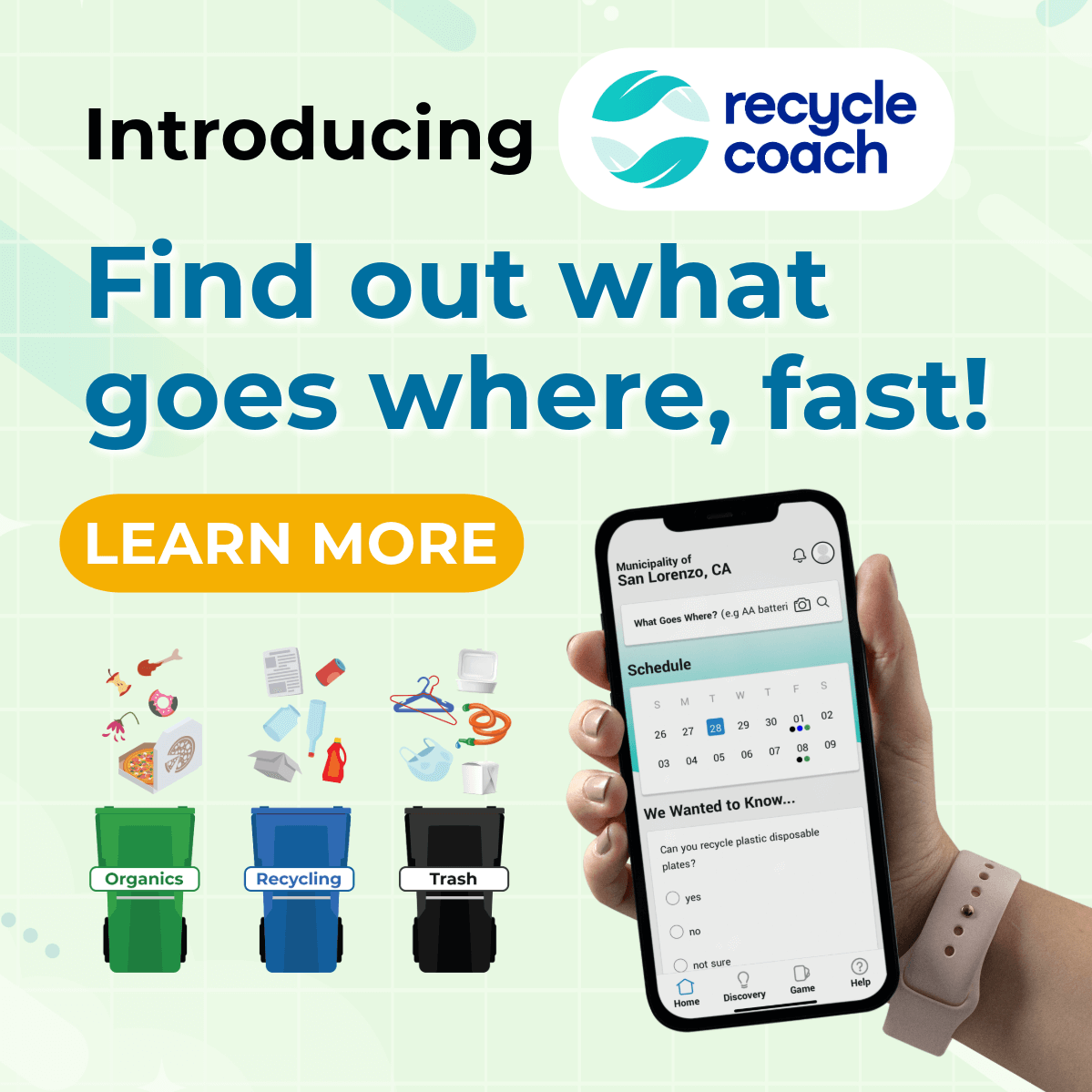10 Year Strategic Vision & Goals
2024 – 2034
MISSION STATEMENT
To provide the highest value in wastewater, solid waste, and recycling services to our customers and protect the San Francisco Bay and our communities.

I am pleased to present Oro Loma Sanitary District’s 2024-2034 Strategic Plan. It is the product of input from staff, management team, and the Board of Directors. The Plan reflects our desire to renew our existing sewer and treatment plant infrastructure, and seek continual improvement in all areas of the business.
Our vision is to work injury free, maintain an extraordinary staff, respond well to new regulations, selectively implement new technologies, proactively communicate with the public, manage for the best long-term value, and achieve excellence in our industry. The Strategic Plan is intended to align the actions of our team and allocation of resources to achieve the established vision.
The Plan anticipates a changing regulatory environment, significant staff turnover, presents opportunities to improve infrastructure, and to leverage available technologies to improve our operation and infrastructure investments over the next ten years. It also includes a focus on measuring and improving customer service, raising our existing high safety culture and performance, and maintaining award winning financial transparency and long-term cost effectiveness.
This document is the sixth version of the ten-year strategic goals. Staff executed well on prior plans, in some cases achieving ten-year goals within a two-year span. The strategic goals document will be updated again in 2027 (3 years).
I appreciate the Board, management team, and our staff, whose contributions made this a better document. I look forward to working with our team to make the vision a reality.
Respectfully submitted,
Jimmy Dang
Vision of Oro Loma Sanitary District
Safety is paramount
We will maintain a safety program, safety culture, safe work habits, and safe work record to reflect our practice of proactive risk identification and mitigation. Our vision is to send a generation of employees into retirement without impairment.
Our staff remains our key asset
We will practice deliberate knowledge transfer, keep the selection of extraordinary team players as our norm, foster an environment to promote professional development, and offer an appropriate compensation package. We strive to create and nurture an inclusive culture, where differences and diversity of thought contribute to exemplary customer service.
Our response to emerging regulations gives us a competitive advantage
We will perform sound planning, engage with the regulatory community, and innovate as we select optimal responses to significant emerging regulations.
New technologies are only implemented when worth our investment
We will scrutinize available technologies and implement only those that make us future-ready and increase our standard for operational resiliency while meeting our high standards for investment of public funds.
Measured risk taking is part of sound management
We will continue to take prudent business risks that improve the District’s ability to respond to future challenges while maintaining our fiscal strength.
The public deserves that we manage with the long-term value in mind
Through sound management and ongoing infrastructure renewal, we will maintain our position as a reliable and low-cost service provider for generations to come.
Our best service starts with proactive communication
We will identify issues of public concern and communicate our approach to addressing these issues well in advance of any requirement for significant action.
Excellence is pursued over average performance
We will set the standard for operational resiliency, regulatory compliance, and cost-efficient operations among sanitary agencies in the State.
District Values
Do it safe, do it right, do it now
This motto captures many of the District’s core values. Above all else, we value the long-term safety of our employees. We value excellence and doing the job right and take action to make the District better over time.
Customer Service
We go above and beyond to deliver quality and respectful service. In most cases, the best service involves doing our jobs well so the customer has the ability to focus on other things. When we meet the customer face to face, our goal is to provide the highest level of service through responsiveness, professional appearance, expertise, and courtesy.
Diversity and Inclusion
We are committed to fostering a diverse and inclusive workforce where we value inclusion and belonging. We create an environment where employees of all backgrounds and experiences are welcomed, respected, and engaged; and we value our community’s rich diversity.
Trust
Trust is foundational for elite performance. It is earned through decades of sound stewardship, continually seeking to improve, and living our values each day. Trust includes the public’s trust, the trust of partners within the community, and internal relationships throughout the District.
Teamwork
We value teamwork and are committed to working together internally and partnering with outside agencies and customers.
Communication
We value excellent communication between all levels of the organization and between the District and the community. Communication is essential to advise the public on ways to partner with us in protecting the environment and solicit feedback on ways in which we can improve our service.
Ownership
We value the attitude of ownership among all staff. An attitude of ownership positively benefits the way we care about the District and the way we allocate resources to generate the best long-term value for our customers.
Strategic Goals
Financial Stability
|
10-YEAR STRATEGIC GOAL |
INTERMEDIATE |
|
Oro Loma will provide high value to the ratepayers today and in the future. High value includes making efficient and sustainable decisions while paying for needed infrastructure and maintaining rates within the lowest 50 percentile in Alameda County. (2021) |
Perform annual sewer service charges survey for Alameda County jurisdictions and report the District’s ranking within the County. |
|
Maintain solid waste rates among the lowest in Alameda County. (2015). |
Perform annual solid waste rates survey for Alameda County jurisdictions and report the District’s ranking within the County. |
|
Identify and communicate to the Board and to the public future funding needs for operations and projected regulatory/infrastructure upgrades. (2013) |
Update and report to the Board the cash flow & investment timeline once per quarter. Perform 5-year cash flow projections at least once per year. Develop Prop. 218 notice explaining the rate increase and associated needs in the District. The updated sewer service charges shall include funding of Capital projects. |
|
Build Capital Asset Program funding into rate structure by 2029. |
Raise sewer service charges at a minimum of 7.5% per year in the next rate setting process (FYs 21/22-25/26). Any portion of rate increase above inflation to be used to fund the capital program. |
|
Continue to explore alternatives for the beneficial reuse of biosolids. (2015) |
Continue to land apply biosolids and monitor industry trends. Develop potential biosolids disposal options for Board consideration. |
|
Produce timely, accurate, transparent, and useful financial reports. (2013) |
Issue monthly financials by the 10th of the following month. Develop real-time management access to financial data. |
|
Update “10-year Strategic Vision and Goals” document every three years. (2021) |
Next update scheduled for April 2027. |
Safety and Employee Development
|
Zero lost time accidents. (2013) |
Continue existing high-level of safety training (minimum 20 training sessions per year). |
|
Maintain High Performing Safety Culture (2013) |
Maintain average time for correction of safety work orders at or under 30 days (excludes work orders where alternate, safe methods of work are available). Hold monthly Safety Committee meetings and distribute minutes to all staff. Perform written management safety audits, a minimum of four times per year. |
|
Survey Oro Loma Safety Culture every two years and maintain a minimum of 90% positive responses in the aggregate. (2015) |
Perform Safety Culture survey in Fall of 2024 and present findings to the management team. Identify action plan for any areas in need of improvement. |
|
Maintain safety policies and procedures by auditing, updating, and training on policies at least every three years. (2013) |
Review all safety procedures in 2025 and update as needed. |
|
Maintain training standards and video-based operator training program for all areas of the plant. (2013) |
Audit operating training materials annually or as-needed when a new process is introduced. |
|
Maintain Collections training program including Target Solutions Training System, embedded video, critical situation response, and/or multimedia options. Link videos to Geographic Information System (GIS). (2017) |
Audit Collections training materials annually or as-needed when a new process is introduced. |
|
Conduct critical incident response debriefing sessions and document lessons learned for future training. (2013) |
Perform debrief sessions as events dictate. Maintain an internal archive of lessons learned. |
|
As a District, we will provide financial support and encourage any employee with a plan and desire to improve knowledge, skills, and/or abilities. (2017) |
Promote the availability of the educational reimbursement program to all staff two times per year. |
|
Conduct annual management development training (commit to a minimum of two training topics per year). (2017) |
Coordinate annual management training and develop program for existing management team. Management team to identify potential training needs and agree on the highest priority items for group training. |
|
Develop and continue to commit to a high functioning Board. Invest in training of Board members and seek ways to improve efficiency of existing Committees. |
Provide training opportunities to new Board members and refreshers to existing Board members. |
Regulatory Compliance
|
Zero collection system overflows. (2013) |
Meet cleaning and inspection goals annually. Perform video inspections of repair work within 48 hours of notification by Engineering. |
|
Zero lift station overflows. (2013) |
Continue to perform annual asset management analysis with Engineering. Continue to update critical equipment list and response action plans. |
|
Zero effluent violations. (2013) |
Provide annual training on NPDES Permit Conditions. Identify and include in the 10-year Capital Plan projects to improve effluent quality during storm events. |
|
Zero permit violations due to equipment failures. Maintain a level of reliability so that ≤ 12 off hours (5:30 p.m.to 7:00 a.m.) trouble calls are made for plant equipment per year. (2013) |
In order to limit unnecessary callouts, develop a matrix detailing key equipment and allowable time to dispatch for use by operations when assessing equipment failures (i.e. if a process can wait until Monday at 7am, wait until then to address). |
|
Maintain compliance with all SSMP and CIWQS reporting requirements. (2013) |
Certify monthly “no spill” reports where applicable. Certify all spill reports as they occur. Update SSMP at least once every six years (last revised in 2019). |
|
Develop “watch list” of emerging regulations, key regulatory contacts, and participate when warranted. (2013) |
Review BACWA Regulatory Issues Summary with Operations Committee as needed. |
|
Maintain lift station contingency plan and provide training to allow an average remote site response in 90 minutes at all remote sites. (2013) |
Update contingency plan annually. Perform a minimum of two timed, scenario-based emergency response launches per year (i.e. measure time to select, hitch, and exit plant with appropriate tow vehicle and equipment). |
|
Maintain policies and procedures within guidelines of “industry best”. (2013) |
Audit procedures annually. Perform update on any policy or procedure older than three years. |
|
Continue to meet requirements of County and State solid waste requirements, including SB 1383. (2021) |
Continue outreach and education to all customers and monitor compliance with all aspects of the law. |
|
Reduce residential recycling contamination by 35% by 2025. (2019-50% by 2024; 2021-35% |
Implement Smart Truck Technology to monitor contamination. Track progress through KPIs and provide additional education to customers as needed. |
|
Maintain 100% participation in organics recycling in schools. (2019) |
Continue outreach and education to schools. |
|
Be carbon free for indirect GHG emissions by 2040; achieve a 50% reduction in direct GHG emissions by 2040 (compared with Year 2000 levels). (2019) |
Provide update on Oro Loma Climate Action Plan in FY24/25. |
|
The District will produce as much electricity as it uses on an annual basis by 2030. For the period between 2021 and 2030, the District will focus on reducing electrical consumption. In 2030, the new Cogeneration System will be designed to provide 100% of District electricity to 2050. (2021) |
Evaluate energy producing technologies and explore partnership opportunities to assist with providing 100% of District electricity. |
Customer Service
|
Measure customer satisfaction related to sewer, solid waste, and recycling activities every two years. Identify areas for improvement. (2013) |
Administer customer satisfaction survey every two years (Summer 2024) and present results to the Board. |
|
Measure Collections customer satisfaction and identify areas for improvement by written surveys. (2017) |
Present annual findings to the Board in August of each year. |
|
Research and establish vision for Administration & Finance office of the future. (2021) |
Modernize administrative practices – investigate options for paperless A/P, and remote work policy. Identify and implement practices to increase customer service via computer-based interfaces. |
|
Increase the call-to-action messaging for the public, with emphasis on its role in protecting the environment. (2021) |
Implement the direction established in the Communications Plan – recycle right and 3Ps. |
|
Manage maintenance needs of the District with existing workforce and outside assistance as needed. Maintain maintenance backlog to below 125 work orders at least two months each year. (2021) |
Maintain compliance with the 10-year standard each year. |
|
Maintain 95% annual uptime on cogeneration system. (2015) |
Maintain compliance with the 10-year standard each year. (Planned outages for engine rebuilds to be excluded from measurement). |
|
Cooperate with the County in its efforts to address illegal dumping and litter in the District. Take a meaningful step beyond current efforts to beautify the community. (2019) |
Continue outreach on bulky waste pick-ups and evaluate multi-family bulky waste collection. |
|
Maintain a Communications Plan for District outreach efforts. Update the plan every five years. (2019). |
Update existing plan in FY 2025/26. Review plan with Board at least every two years. |
Infrastructure
|
10-Year Capital Planning Document for all District Assets (Update Monthly). (2013) |
Report monthly to Construction Committee and update 10-year plan as new information becomes available. |
|
Improve the condition of the collection system by approximately 3% each year for the next 10 years. Existing baseline includes 76 miles with a defect score of 3 or greater. The goal is to reduce the value from 76 to 57 miles by 2029. (2019) |
Design and perform pipe replacements and spot repairs within total two-year budget amount of $19.5M (includes line replacement plus $1.25M/year for spot repairs). |
|
Replace a minimum of 40 miles of collection system pipe between 2019 and 2029 (increase miles of HDPE from 32.7 (10/31/18) to 72.7). As of June, 2023, there are 55 miles of HDPE pipe in the collection system. (2019) |
Replace a minimum of 4 miles of pipe every year until goal is reached. |
|
Manage line replacement program to limit high-frequency footage (an indicator of system health) at or below 10% of the District’s system (27 miles). As of June 2023, 10.% (28.7 miles) of the collection system is on the high frequency cleaning schedule. (2017) |
Continue to monitor improvements to high-frequency footage gained from line replacement program. Communicate progress to Board on a monthly basis. |
|
Build GIS into central reference source for all District Assets and customer service issues. (2013) |
Continue to maintain minimum 10 District staff capable to use GIS for customer service response. Perform refresher training annually. |
|
Maintain Asset Management Program for all District assets by 2026. (2013) |
Evaluate resources required to maintain asset managment program. Present to Board and seek direction to provide additional resources by 2026. |
|
In response to ongoing climate change trends |
Continue to build all new infrastructure above the 100-year sea rise projections. Develop long term plan to mitigate sea level rise due to climate change. |
|
Zero overflows due to capacity limitations. (2013) |
Perform source detection analysis on the main trunks feeding the Grant Avenue and Lewelling Blvd. interceptors and update hydraulic model in FY 2025/26. |
|
Conduct treatment plant electrical load study and implement identified improvements prior to planned cogeneration system replacement in 2027. (2013) |
Present findings of Plant Electrical Load study to the Board and communicate resources required to implement plan in FY 23/24. |
|
Maintain lift stations with a level of reliability so that we receive no more than 10 off-hours lift station maintenance calls per year. (2013) |
Continue annual analysis of trouble calls related to lift stations. |
Definitions
Mission Statement: A declaration of the District’s approach in providing the needed services. All activities of the District should be in light of and in support of the Mission Statement.
Vision Statement: A statement that articulates the Board of Director’s strategic vision goals. The goals outline the highest level achievements established in the Strategic Plan. The Vision creates and drives strategy and tactics identified elsewhere in the Plan. The Board develops and adopts the Vision Statement. The Vision Statement will be reviewed every three years and will typically change more frequently than the Mission Statement to reflect the direction in which the Board takes the District over the 10-year horizon of the Strategic Plan.
Strategic Focus Areas: The broad areas of District operations, planning, and management that will contain Strategic Goals, spread out over a 10-year period, to ensure optimum fulfillment of the Vision. These also organize the Plan.
Strategic Goals: Specific and measurable activities or targets that address strategy of
fulfilling the Vision.
Intermediate Goal: Planned goal for completion in the near term.


